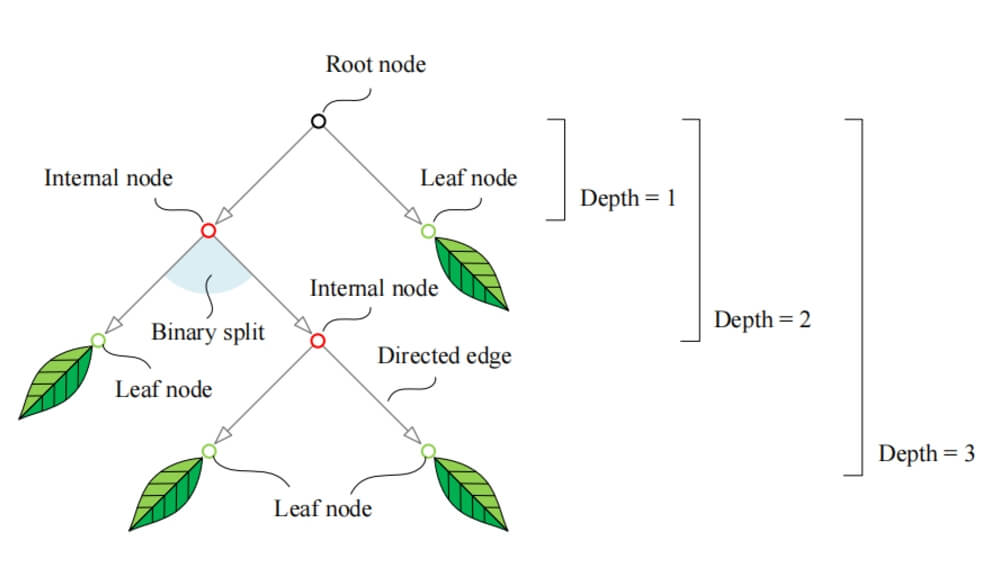Discover how to craft effective prompts to maximize the performance of AI tools like Claude. This guide covers general techniques, specific examples for content creation and analysis, and troubleshooting tips to reduce hallucinations and improve responses. Perfect for beginners and advanced users alike.
Writing a good prompt is the first step to effectively using AI, but many people stumble at this first step!
This document is the official Claude prompt usage guide. It’s likely that most people are not familiar with this guide, so Claude has translated it into Chinese to help everyone better understand how to write AI prompts.
The techniques mentioned in the guide are generally applicable to most AI large-model tools available today, including domestic tools like Kimi and Tongyi.
For those who have not yet started using most AI tools, this guide can help you get started with AI prompt techniques!

Here are some prompt usage techniques:
I. General Techniques for Effective Prompts
-
Be Clear and Specific
Bad prompt: "Help me make a presentation."
Good prompt: "I need help creating a 10-page quarterly sales meeting presentation. The presentation should cover our second-quarter sales performance, best-selling products, and sales targets for the third quarter. Please provide an outline of key points for each page."
(Why better: The good prompt includes specific details, such as the number of slides, the purpose of the presentation, and the main topics to be covered.)
-
Clearly state your task or question at the beginning of the conversation.
-
Provide context and details to help Claude understand your needs.
-
Break down complex tasks into smaller, more manageable steps.
-
Use Examples
Bad prompt: "Write a professional email."
Good prompt: "I need to write a professional email to a client about a project delay. Here’s a similar email I sent before:
‘Dear (Client),
I hope you're doing well. I wanted to update you on the progress of (Project Name). Unfortunately, we've encountered an unexpected issue, which will delay the completion date by about two weeks. We’re working hard to resolve this and will keep you updated.
If you have any questions or concerns, please feel free to let me know.
Best regards,
(Your Name)’
Please help me draft a new email with a similar tone and structure but explaining that the delay is now due to a supply chain issue and will take an additional month."
(Why better: The good prompt provides a concrete example of the desired tone and style, giving Claude a clear reference.)
-
Provide examples of the output you expect.
-
If you need a specific format or style, show Claude an example.
-
Encourage Thinking
Bad prompt: "How can we improve team productivity?"
Good prompt: "I want to improve my team's productivity. Please think through the following aspects step by step:
Please briefly explain your reasoning for each step. Finally, summarize your thoughts."
(Why better: The good prompt asks Claude to think systematically, provides a guided structure, and asks for reasoning. It also requests a summary at the end for clarity.)
-
For complex tasks, ask Claude to “think step by step” or “explain the reasoning process.”
-
This can lead to more accurate and detailed responses.
-
Current productivity barriers (e.g., too many meetings, unclear priorities);
-
Potential solutions (e.g., time management techniques, project management tools);
-
Challenges that might arise during implementation;
-
Ways to measure improvements.
-
Iterative Refinement
Bad prompt: "Make it better."
Good prompt: "The beginning is good, but please make the following changes:
(Why better: The good prompt gives specific feedback and clear instructions for improvements, helping Claude make targeted adjustments rather than relying on a vague understanding of “better”—which may differ from the user's expectations.)
-
The tone should be more casual and friendly;
-
Add a specific case of a product helping a customer;
-
Shorten the second paragraph and focus more on the benefits rather than the features."
-
If Claude’s first response isn’t ideal, ask for clarification or modifications.
-
You can always say, "This direction is good, but can you adjust X to be more like Y?"
-
Leverage Claude’s Knowledge
Bad prompt: "What is marketing? How should I do it?"
Good prompt: "I’m developing a marketing strategy for a new eco-friendly cleaning product line. Can you outline current trends in green marketing? Please include:
This information will help me plan our marketing approach."
(Why better: The good prompt asks for specific, context-related information, fully utilizing Claude’s knowledge base. It provides a clear context for Claude to construct the answer in the most relevant way.)
-
Claude has extensive knowledge in many fields. Don’t hesitate to ask for explanations or background information.
-
Ensure you provide relevant background and details to make Claude’s response as targeted and helpful as possible.
-
Key messaging strategies that resonate with eco-conscious consumers;
-
Effective channels to reach this audience;
-
Successful green marketing case studies from last year;
-
Potential pitfalls to avoid (e.g., greenwashing accusations).
-
Use Role-playing
Bad prompt: "Help me prepare for a negotiation."
Good prompt: "You are my fabric supplier for my backpack manufacturing company. I’m preparing to negotiate with the supplier to request a 10% price reduction. Please act as the supplier and:
Then, switch roles and give me advice on how I, as the buyer, should approach the negotiation to achieve my goal."
(Why better: This prompt uses role-playing to explore multiple perspectives on the negotiation, providing more comprehensive preparation. It also encourages Claude to better capture nuances from specific viewpoints, improving the intelligence and quality of the response.)
-
Have Claude adopt a specific role or perspective when answering.
-
Provide three possible reasons to oppose the price reduction request;
-
For each reason, offer a rebuttal from my perspective;
-
Provide two alternative proposals the supplier might offer instead of directly reducing the price.
II. Techniques and Examples for Specific Tasks
1. Content Creation
(1) Identify the Audience
Let Claude know the target audience for the content.
Bad prompt: “Write something about cybersecurity.”
Good prompt:
“I need to write a blog post about cybersecurity best practices for small business owners. The audience is not very tech-savvy, so the content should:
-
Be easy to understand, avoiding technical jargon as much as possible;
-
Be practical, providing actionable recommendations;
-
Be engaging, with a touch of humor to keep the readers interested.
Please provide an outline for a 1,000-word blog post covering the top 5 cybersecurity practices these business owners should adopt.”
(Why better: The good prompt specifies the audience, tone, and key features of the content, giving Claude clear guidance to create appropriate and effective content.)
(2) Define Tone and Style
Describe the desired tone.
If there’s a style guide, highlight its key points.
Bad prompt: “Write a product description.”
Good prompt:
“Please help me write a product description for our new ergonomic office chair. Use a professional yet engaging tone. Our brand style is friendly, innovative, and health-conscious. The description should:
-
Highlight the chair’s main ergonomic features;
-
Explain how these features benefit the user’s health and productivity;
-
Briefly mention the use of sustainable materials;
-
End with a call to action, encouraging readers to try the chair.
Keep the description within 200 words.”
(Why better: This prompt provides clear guidance on the tone, style, and specific elements to include in the product description.)
(3) Define Output Structure
Provide a basic outline or list of points you want to be covered.
Bad prompt: “Make a presentation about company performance.”
Good prompt:
“I need to create a presentation on second-quarter performance. Please structure it into the following sections:
-
Overview;
-
Sales performance;
-
Customer acquisition;
-
Challenges;
-
Outlook for Q3.
For each section, suggest 3–4 key points based on typical business presentations. Additionally, recommend an effective data visualization method for each section (e.g., charts, graphs).”
(Why better: This prompt provides a clear structure and requests specific elements (key points and data visualizations) for each section.)
2. Document Summarization and Q&A
(1) Specify Your Needs
Request a summary of specific aspects or sections of a document.
Clearly and directly ask your questions.
Specify the type of summary you want (output structure, content type).
(2) Use the Document Name
Reference the document by name when attaching it.
(3) Request Citations
Ask Claude to reference specific parts of the document in the response.
Here’s an example that incorporates all three techniques:
Bad prompt: “Summarize this report.”
Good prompt:
“I’ve attached a 50-page market research report titled ‘2023 Technology Industry Trends.’ Can you summarize the section on AI and machine learning trends in two paragraphs? Then answer the following questions:
-
What are the top three areas where companies are applying AI this year?
-
How is machine learning impacting job roles in the tech industry?
-
What potential risks or challenges related to adopting AI does the report mention?
When answering, please reference specific chapters or page numbers.”
(Why better: This prompt identifies the focus of the summary, provides specific questions, and requests citations to ensure the response is relevant and actionable. It also specifies the ideal output format, such as limiting the summary to two paragraphs.)
3. Data Analysis and Visualization
(1) Specify the Desired Format
Clearly describe the data format you need.
Bad prompt: “Analyze our sales data.”
Good prompt:
“I’ve attached a spreadsheet titled ‘2023 Sales Data.’ Please analyze it and present the key findings in the following format:
-
Executive Summary (2–3 sentences);
-
Key Metrics:
-
Total sales for each quarter;
-
Best-performing product category;
-
Fastest-growing region.
-
Trends:
-
List 3 notable trends, each with a brief explanation.
-
Recommendations:
-
Provide 3 data-driven recommendations, each with a short justification.
After the analysis, suggest three effective visualization methods to convey these findings.”
(Why better: This prompt provides a clear structure for the analysis, specifies key metrics to focus on, and asks for recommendations and visualization suggestions to aid further formatting.)
4. Brainstorming
(1) Generate Ideas by Requesting Possibilities or Alternatives
Clearly state the topic you want Claude to cover in the brainstorming session.
Bad prompt: “Give me some team-building ideas.”
Good prompt:
“We need some team-building activities for a 20-person remote team. Can you brainstorm the following:
-
Suggest 10 virtual team-building activities that promote collaboration.
-
Briefly explain how each activity fosters teamwork.
-
Indicate which activities are best suited for:
-
Enhancing problem-solving skills;
-
Improving communication;
-
Ice-breaking.
-
Recommend one low-cost and one high-end option.”
(Why better: This prompt sets specific parameters for the brainstorming session, including the number of ideas, activity types, and additional classifications, resulting in more structured and practical output.)
(2) Request a Specific Format (e.g., bullet points, numbered lists, or tables) for Better Readability
Bad prompt: “Compare project management software options.”
Good prompt:
“We’re considering three different project management software options: Asana, Trello, and Microsoft Project. Could you compare these tools in table format based on the following criteria:
-
Key features;
-
Usability;
-
Scalability;
-
Pricing (include specific plans if available);
-
Integration capabilities;
-
Best use cases (e.g., small teams, enterprises, specific industries).”
(Why better: This prompt requests a specific structure (table) for comparison and provides clear criteria, making the information easy to understand and apply.)
III. Troubleshooting, Reducing Hallucinations, and Maximizing Performance
1. Allow Claude to Acknowledge Uncertainty
Let Claude know it’s acceptable to admit when something is unknown. For example: “If you’re unsure about something, feel free to say you don’t know.”
2. Break Down Complex Tasks
If a task seems too large and Claude misses steps or performs poorly on certain parts, break it into smaller steps and complete it with Claude one message at a time.
3. Include All Context for New Requests
Claude does not retain prior conversation context. Therefore, include all necessary background information with each new interaction.
IV. Examples of Good vs. Bad Prompts
Example 1: Marketing Strategy Development
Bad Prompt:
“Help me create a marketing strategy.”
Good Prompt:
“As a seasoned marketing consultant, I need your assistance in developing a comprehensive marketing strategy for our new eco-friendly smartphone accessory line. Our target audience is environmentally conscious Millennials and Gen Z consumers. Please provide a detailed strategy covering:
-
Market Analysis:
-
Current trends in eco-tech accessories;
-
2–3 key competitors and their strategies;
-
Potential market size and growth forecasts.
-
Target Audience Personas:
-
A detailed profile of our ideal customers;
-
Their pain points and how our products address them.
-
Marketing Mix:
-
Product: Key features to highlight;
-
Price: Suggested pricing strategy with rationale;
-
Place: Recommended distribution channels;
-
Promotion:
(a) 5 key marketing channels with pros and cons of each;
(b) 3 creative campaign ideas for the product launch. -
Content Strategy:
-
5 content themes that will resonate with the audience;
-
Suggested content types (e.g., blog posts, videos, infographics).
-
KPIs and Metrics:
-
5 key metrics to track;
-
Suggested tools to measure these metrics.
Present this information in a structured format using headings and bullet points. Where relevant, explain your reasoning or provide short examples.
After outlining the strategy, identify potential challenges or risks we should be aware of and provide mitigation strategies for each risk.”
(Why better: This prompt combines multiple techniques, including role assignment, specific task breakdown, structured output requirements, brainstorming (campaign ideas and content themes), and the need for explanations. It provides clear guidance while leaving space for Claude’s analysis and creativity.)
Example 2: Financial Report Analysis
Bad Prompt:
“Analyze this financial report.”
Good Prompt:
“I’ve attached our company’s Q2 financial report, titled ‘Q2_2023_Financial_Report.pdf.’ Please analyze the report as a seasoned CFO and prepare a briefing for the board. Structure the analysis as follows:
-
Executive Summary:
-
Highlight key points in 3–4 sentences.
-
Overview of Financial Performance:
-
Cash Flow: Highlight any areas of concern or positive developments;
-
Margins: Discuss gross and net profit margins, explaining significant changes;
-
Revenue: Compare with the previous quarter and the same period last year.
-
Key Performance Indicators (KPIs):
-
List our top 5 KPIs and their current status (use a table format);
-
Briefly explain the significance of each KPI and any notable trends.
-
Segment Analysis:
-
Analyze the performance of our three main business units;
-
Identify the best and worst-performing segments and explain possible reasons.
-
Balance Sheet Review:
-
Highlight any major changes in assets, liabilities, or equity;
-
Calculate and interpret key ratios (e.g., current ratio, debt-to-equity ratio).
-
Forward-Looking Statements:
-
Make 3 key predictions for Q3 based on the data;
-
Suggest 2–3 strategic actions to improve financial performance.
-
Risk Assessment:
-
Identify 3 potential financial risks from the report;
-
Propose mitigation strategies for each risk.
-
Peer Comparison:
-
Compare our performance to 2–3 key competitors using public data;
-
Highlight areas where we outperform and areas for improvement.
Use charts or tables to visualize data where appropriate. Clearly state and justify any assumptions or interpretations.
After completing the analysis, list 5 questions board members might ask and provide suggested responses.
Finally, summarize the analysis into one paragraph that I can use as an opening statement at the board meeting.”
(Why better: This prompt incorporates role-playing (CFO), structured output, specific data analysis requirements, predictive analysis, risk assessment, comparative analysis, and even anticipated follow-up questions. It provides a clear framework while encouraging deep analysis and strategic thinking.)






